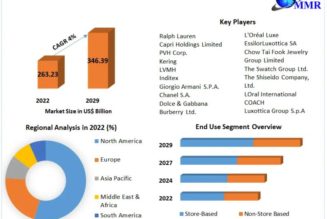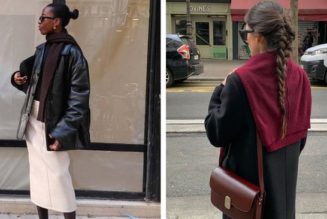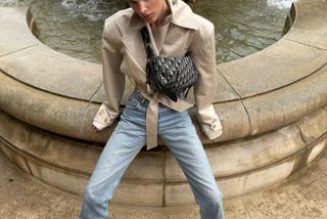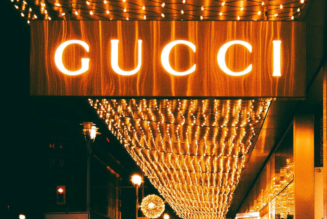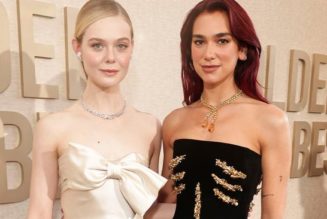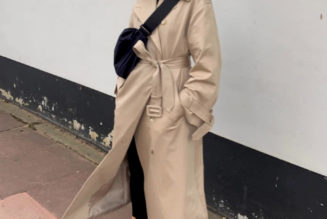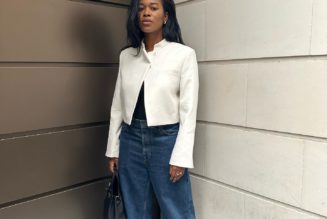![]()
In a strategic move to cement their status at the pinnacle of high-end retail, luxury fashion brands are committing billions to secure their presence in prominent shopping locations worldwide. Among the recent splurges, Kering—the parent company of Gucci and Saint Laurent—invested $1.4 billion in acquiring a monumental building on Milan’s luxurious Via Montenapoleone. This decision follows a similar grand purchase on New York City’s prestigious Fifth Avenue, showing a clear pattern of aggressive investments in prime retail space.
The push for these strategic acquisitions comes as competition amongst luxury brands intensifies. These brands recognize the value of physical storefronts in elite shopping districts as a means of maintaining brand prestige and market dominance. European luxury brands collectively have spent in excess of $9 billion for this purpose since the beginning of the year.
The high expenditure for prime real estate locations is also a response to a certain availability of properties due to a downturn in the market, providing a unique opportunity for these retailers. Kering, for instance, took advantage of this by purchasing a Fifth Avenue property under threat of foreclosure from Wharton Properties.
This real estate trend aligns with data revealing that the wealthiest consumers are the most willing to allocate a significant portion of their incomes to luxury clothing and accessories. Studies have indicated that those earning above $200,000 yearly spend around 8.5% of their income on such items. In light of these findings, luxury brands are tailoring their strategies to target these high-earners more effectively, seeking to lock in loyalty and high average order values. Luxury e-commerce platform Mytheresa, for example, has shifted its focus from attracting aspirational shoppers to serving those with more disposable income, anticipating better financial returns and customer retention.
Summary: Luxury fashion brands are investing billions to secure their flagship stores in world-renowned shopping districts, aiming to attract high-earning consumers who allocate substantial amounts to fashion luxury goods. This trend reflects strategic moves in response to real estate market dynamics and consumer spending patterns.
Strategic Real Estate Investments in High-End Retail
The luxury fashion industry is undergoing a significant transformation as premier brands are strategically investing large sums to affirm their status in the high-end retail hierarchy. These investments focus primarily on securing prime real estate in iconic shopping venues. Notable examples include Kering, a luxury conglomerate that has notably dropped $1.4 billion for a landmark property on Milan’s Via Montenapoleone. This follows a pattern where high-profile purchases on locations like New York’s Fifth Avenue have become more prevalent.
The reasons behind this surge in property investments are manifold. Primarily, there is a desire among luxury brands to outperform competitors by elevating their physical presence in prestigious locations. Recognizing the inherent value of physical stores in maintaining the exclusivity and appeal of their brand, these companies are lavishing over $9 billion on prime locations across the globe.
The opportunity for such investments has partly arisen from a softened real estate market. Several premium locations have become available, often at reduced prices due to market instability. Kering has exemplified this trend by purchasing a property from Wharton Properties before it could go into foreclosure.
The momentum of securing high-value real estate ties in with market research that shed light on consumer spending habits within the luxury sector. Affluent consumers, especially those with annual incomes north of $200,000, tend to allocate a larger portion of their income—around 8.5%—to upscale fashion and accessories. Luxury brands have taken note and are realigning their focus to cater to this demographic. For instance, Mytheresa, an upscale e-commerce platform, has shifted from targeting aspirational buyers to those with higher disposable incomes.
Market Forecasts and Issues
The market forecast for luxury goods remains optimistic, with a projected continuous growth trajectory. Experts predict that luxury spending is likely to increase as emerging markets grow and the number of affluent individuals rises globally. This is despite external challenges such as economic uncertainties, changes in consumer behavior sparked by the digital revolution, and the evolving nature of luxury consumption.
However, brands face issues like the need to integrate e-commerce with traditional retail experiences seamlessly, maintain exclusivity while expanding their customer base, and address growing concerns about sustainability within the industry.
As the landscape evolves, keeping abreast of developments in the high-end retail is crucial. For more insights into the market forecasts and analysis of the luxury fashion industry, visit the official websites of leading market research firms, such as Bain & Company at Bain & Company or McKinsey & Company at McKinsey & Company, for their latest reports and thought leadership.
In conclusion, luxury fashion brands are employing multi-billion dollar strategies to cement their place at the top of the retail pyramid through the acquisition of significant properties in world-renowned shopping districts, targeting the segment of high earners to maximize customer loyalty and spending.
Natalia Toczkowska is a notable figure in digital health technology, recognized for her contributions in advancing telemedicine and healthcare apps. Her work focuses on developing innovative solutions to improve patient care and accessibility through technology. Toczkowska’s research and development in creating user-friendly, secure digital platforms have been instrumental in enhancing the effectiveness of remote medical consultations and patient monitoring. Her dedication to integrating technology in healthcare has not only improved patient outcomes but also streamlined healthcare processes, making her a key influencer in the field of digital health innovation.
